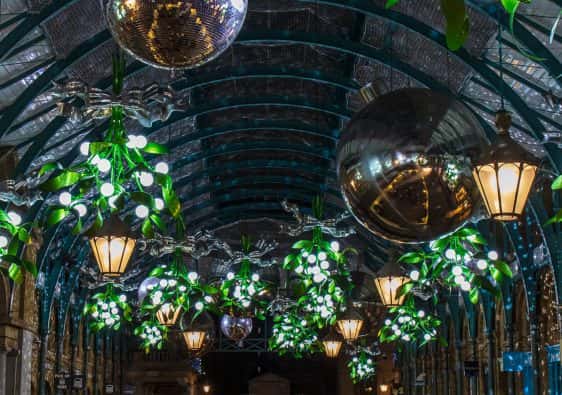The London Transport Museum is one of London’s less well-known museums, located in one of the city’s most famous locations.
The museum itself is based in a beautiful old building in Covent Garden that used to be a flower market. It tells the story of how London’s transport system has developed from 1800 to the present day.
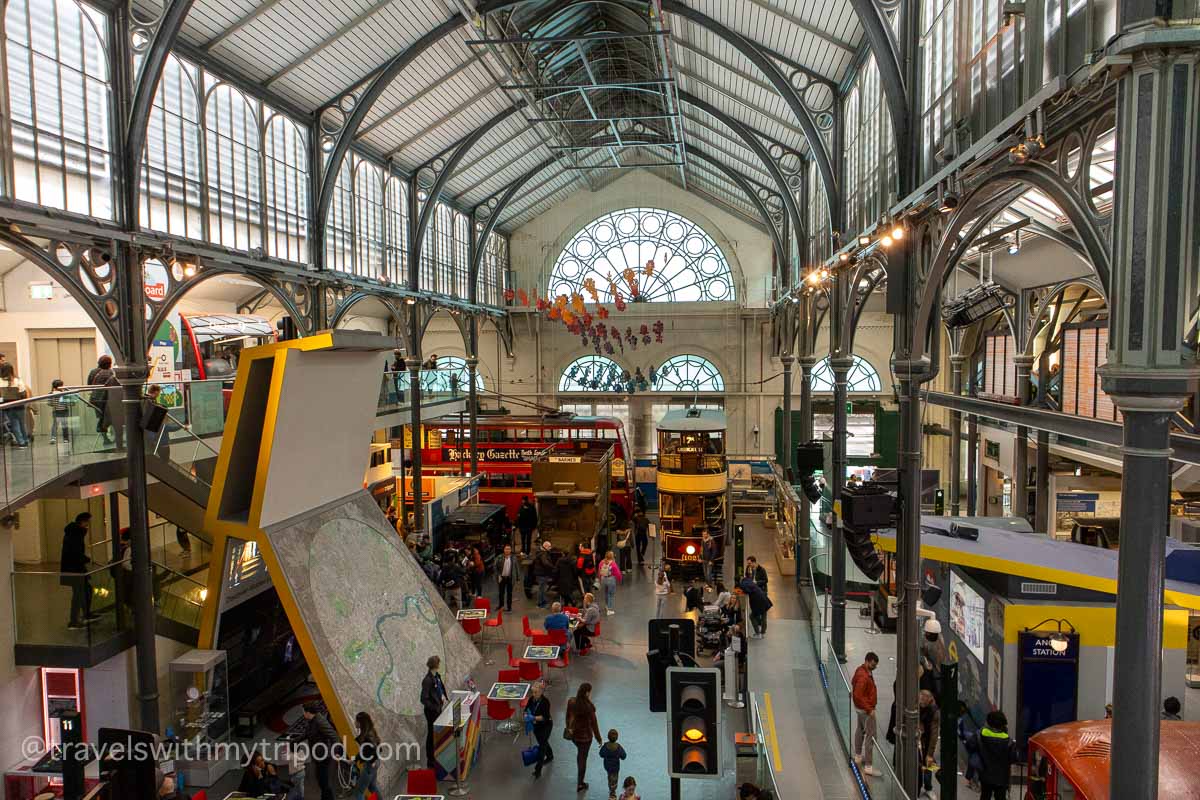
Despite having lived in London for almost my whole life, I had never been to the London Transport Museum before. As a local, transport around London is just something I take for granted every day. I’d never really thought about looking at its history, even though I’ve experienced a lot of it myself. So, in 2024, I decided to visit the museum to see what it was like.
Read on to discover what I thought, as well as tips to make the most of your visit.
Contents
What is there to see at the London Transport Museum?
Level 3
The museum covers 3 levels and the visit begins on the top floor. Here you can find out how people got around in London in the 1800s. The display is split into 3 sections – river, rail and road. These cover the early days of getting around in London when there were only 2 river crossings over the Thames and public transport as we know it didn’t exist.
There’s a good mix of educational information as well as objects and vintage vehicles to look at. I found it fascinating to see how quickly things progressed in the second half of the 1800s. The displays give a good overview of the introduction of horse-drawn bus services and the growth of the railways.

Level 2
The museum continues on the next floor down, and focusses on the birth and development of the London Underground. Here you can discover how the world’s first underground railway was built, admire the only surviving steam engine from the 1860s and even sit inside a vintage railway carriage.


As you walk across to the other side of the floor, it’s hard not to be impressed by the intricate wrought iron framework of the building. This stretches from the ground floor all the way up to the roof. As you walk to the other side, there’s a gallery displaying posters used to advertise the London Underground since the early 1900s. This is well worth a look, as a lot of the poster designs are very artistic.
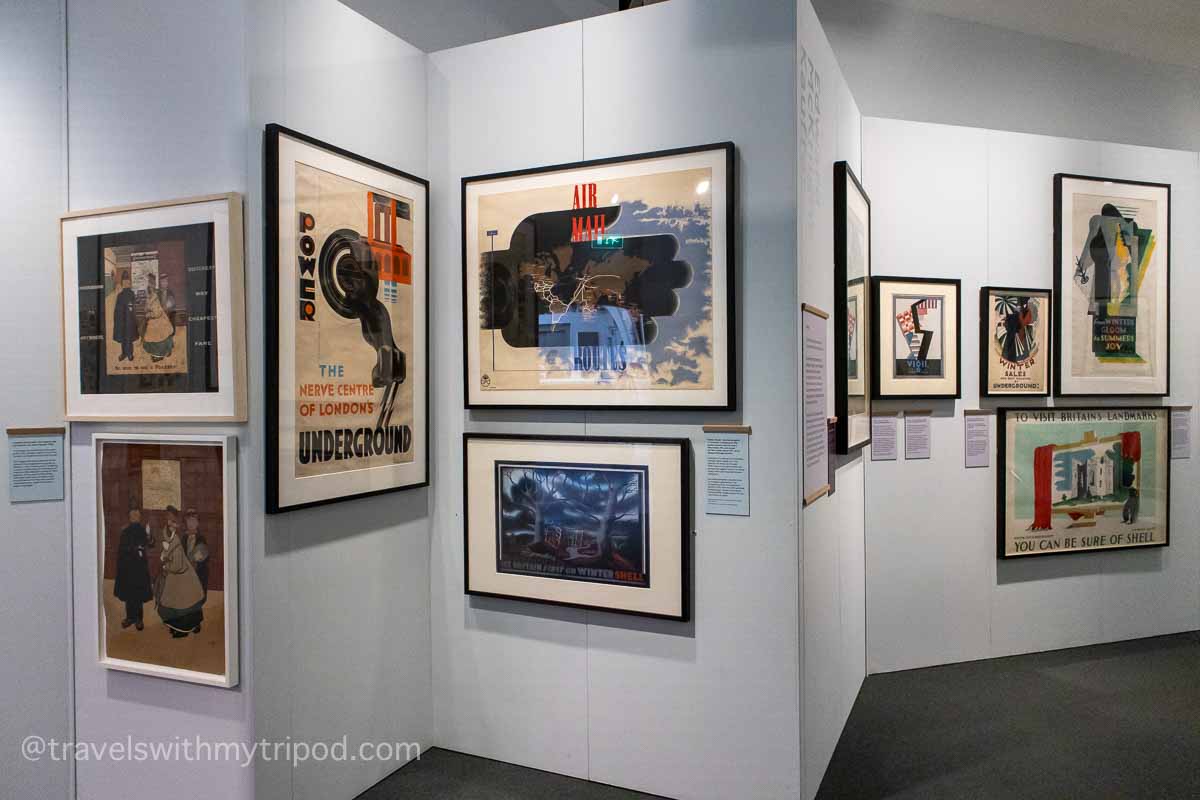
Ground floor
The poster exhibition continues down to the ground floor, which is where you can continue the tour of the museum. This is the largest floor which features a number of exhibits and vehicles.

The displays give you an idea of how surface transport developed, from horse-drawn vehicles used in the early 1900s to motorised buses. There are a few large exhibits too, including how the underground tunnels are dug and the important role London Transport played during the two World Wars. There’s even a brief but interesting history on the dangling spring-like strap hangers that are familiar to anyone that used the tube up until the start of this century!

Like the other exhibits, there’s a good mix between informative text on interactive screens, as well as historic artefacts and plenty of vintage vehicles that you can look inside.

At the end of the museum you exit into the gift shop through a mock-up of a station tunnel. Here you can buy anything from a fridge magnet to a cushion made from iconic Transport for London moquette designs dating back 100 years. You can also access the shop from the main entrance without having to visit the museum – handy to know if you just want to buy a souvenir.


What’s it like to visit the London Transport Museum?
I really enjoyed my visit. There was an interesting selection of exhibits along with a huge amount of information to read about each one. I particularly enjoyed being reminded of buses and trains from my childhood – although a little bit depressing seeing them as museum pieces now!

It is very popular with families, so there were a lot of children there when I visited on a Saturday afternoon. If you do have kids, there are plenty of activities to keep them occupied including a big play area on the 1st floor where they can explore mini vehicles. They can also “drive” a modern Elizabeth line train on a simulator as well as various other interactive activies. In addition, there is a Stamper Trail, a series of 13 numbered stamping stations where kids can stamp the card that they’ve been given at the entrance – much like paper train and bus tickets were stamped in the old days.
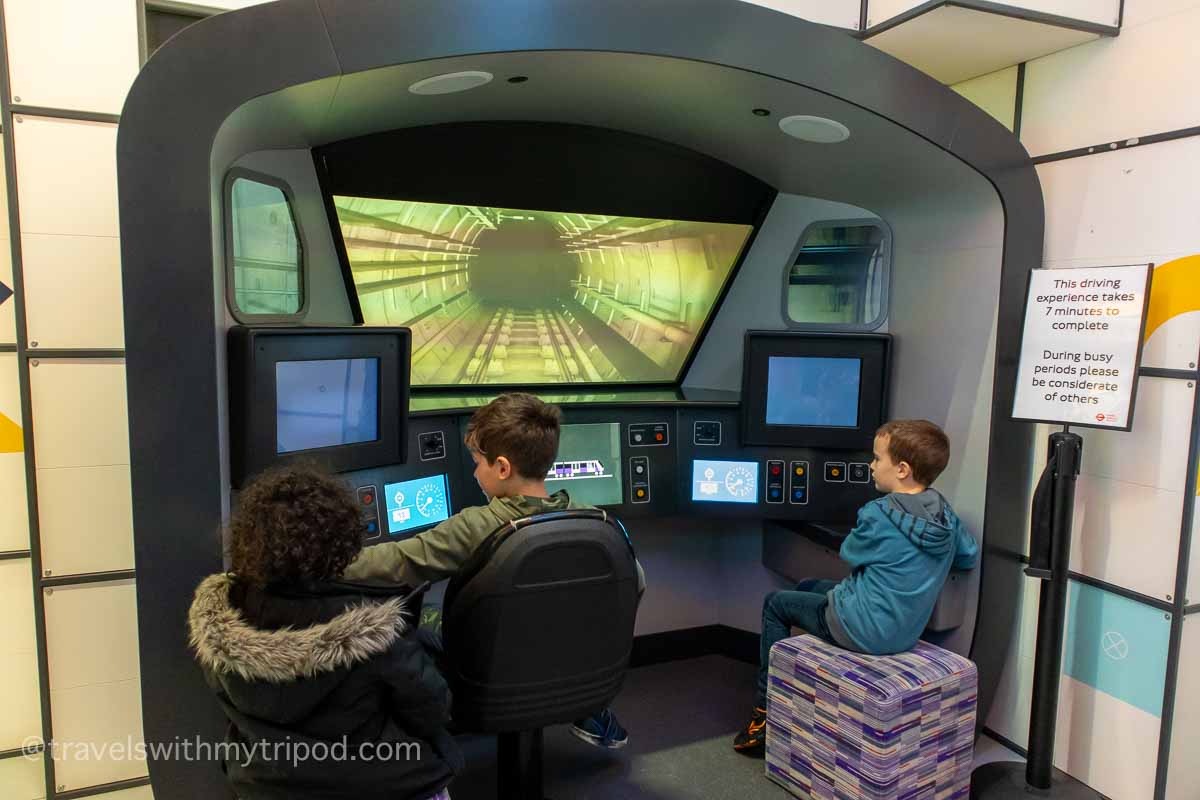
If you prefer to visit at a quieter time, it is possible to buy an off-peak ticket. This is valid for visits after 2 p.m. Monday to Friday during term time and summer school holidays.
Highlights of my visit:
I’m a bit of a closet London Underground map geek so it was interesting to see a display of how these developed over time. This includes the original version of the tube map that we still use today, designed by Harry Beck in 1933.
I also enjoyed sitting inside an underground carriage from the 1900s and imagining life back then compared to modern times.
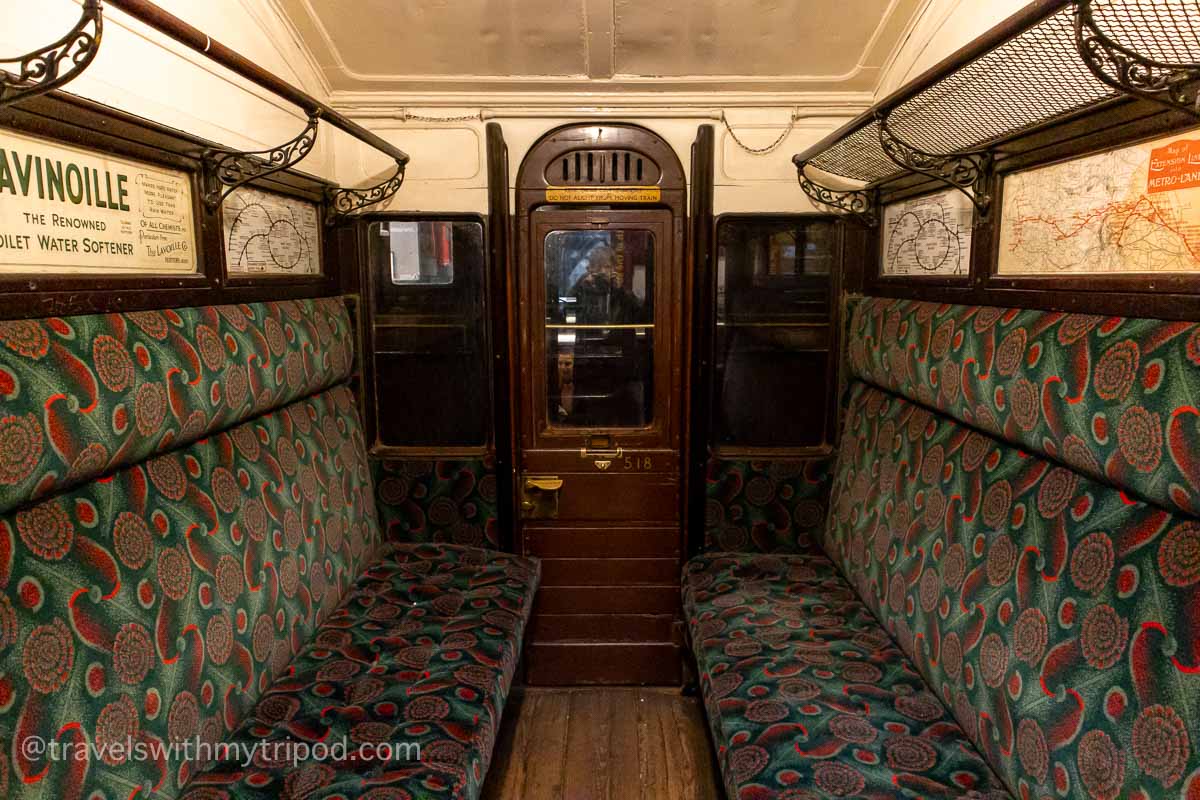
Food and drink at the London Transport Museum
There is a café on the ground floor of the museum called the Lower Deck. It’s not huge, but is a convenient place to grab a drink or snack during your visit. If you’d like to bring your own packed lunch, you can eat these in a small indoor picnic area.
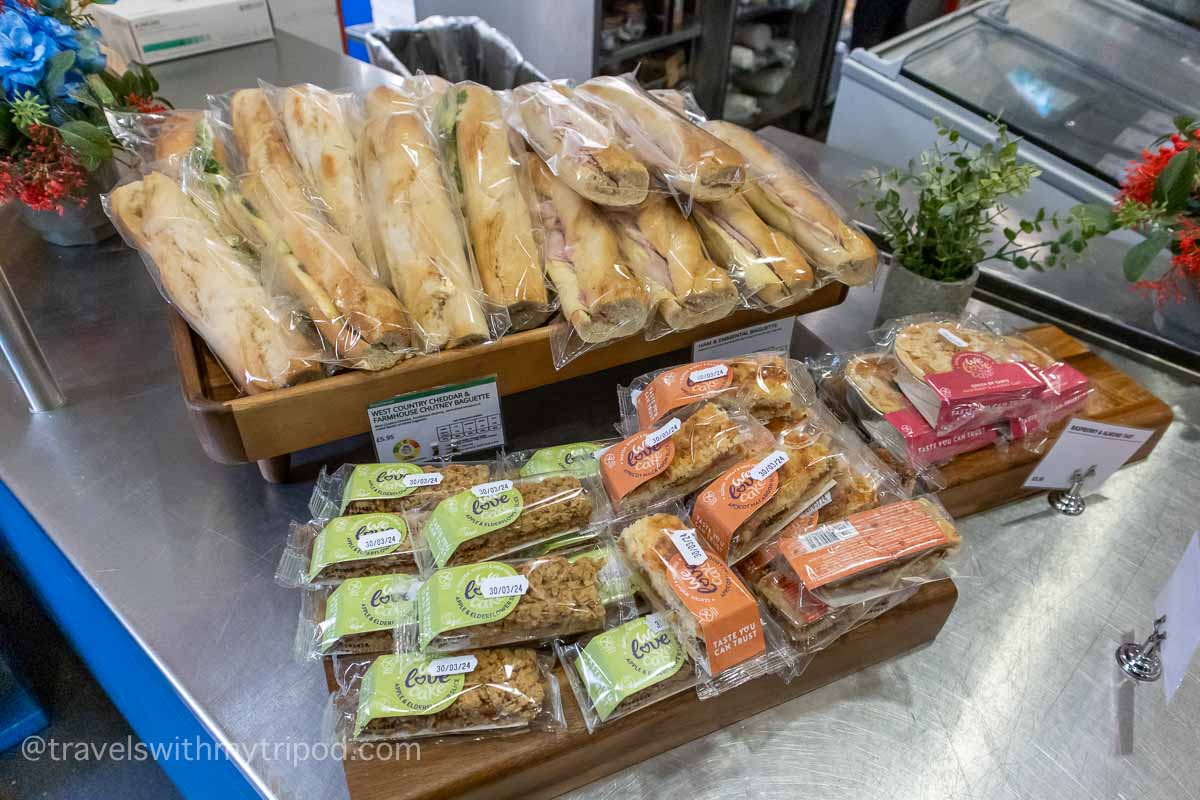
There is also a larger café called the Canteen, located above the shop. The only downside is that you can only access this once you exit the museum. It is fitted out with upholstery, posters and other features reclaimed from the Underground to give a very-London Underground feel to it. It’s much larger and offers a greater range of menu choices than the Lower Deck café.
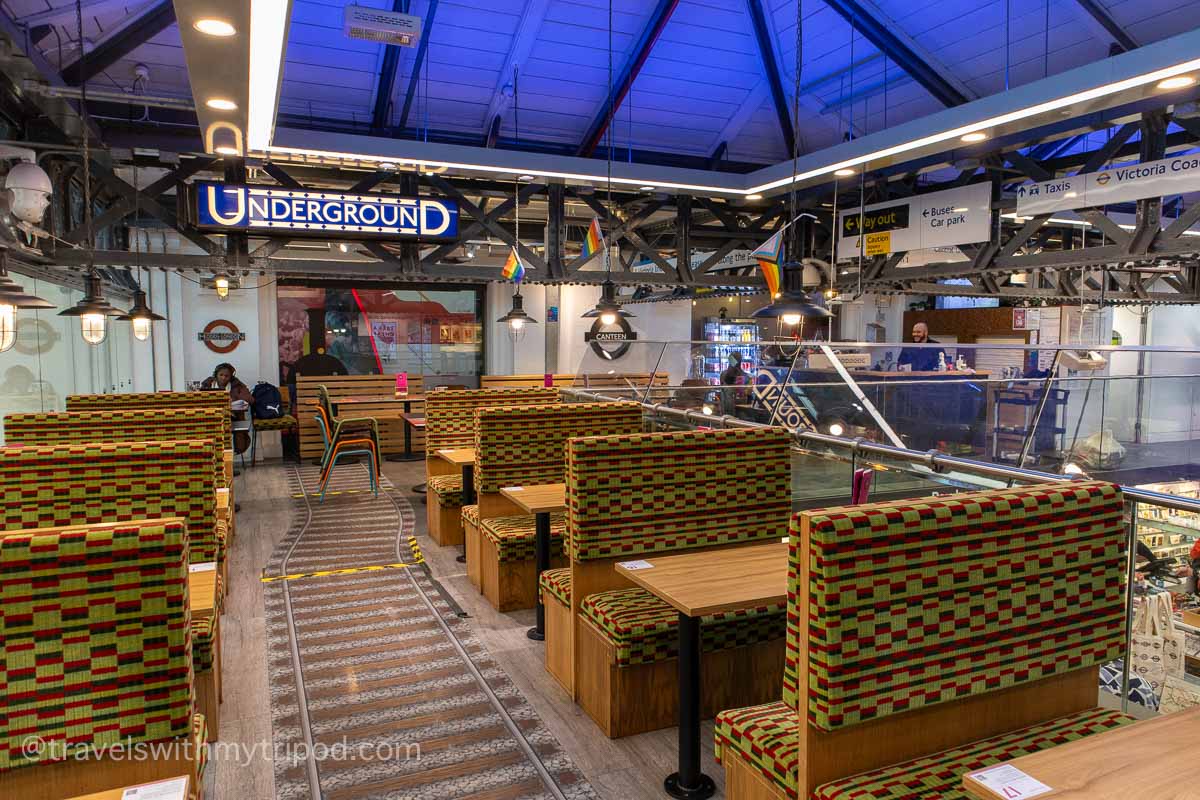
As the museum is located right in the corner of Covent Garden, there are plenty of other places nearby where you can find something to eat or drink.
Visiting the London Transport Museum
Is the London Transport Museum free to enter?
No. Unlike some museums in London that are free, you will need to pay to visit the London Transport Museum. It’s not particularly cheap though, with entry for an adult costing £24.50. However your ticket is an annual pass so you can visit as often as you’d like over the next year.
Children under the age of 18 get in free though and there are discounts for local residents and concessions. If you’re eligible for Universal Credit you can get entry for just £1.
Do you need to book in advance?
It is possible to turn up and buy a ticket on the day, however at busy times you may have to queue. It’s advisable to book in advance online, where you can select a specified date and time for your visit.
How long does it take to visit the London Transport Museum?
With so much to see, you can easily spend at least 2 hours visiting the London Transport Museum. If you like to stop to look at each exhibit and read all the information it will take considerably longer. I’d suggest up to 5 hours or more, especially if you stop to grab a snack during your visit. You don’t need to see everything in one visit though – you can return as often as you like within a year.
All you need to know
Opening hours: Every day 10 a.m. – 6 p.m. (last entry 5 p.m.)
Nearest station: Covent Garden, Leicester Square, Charing Cross, Embankment
Address: Covent Garden Piazza, WC2E 7BB
Cost: £24.50 (adult), free (child aged 17 or under)
Suggested duration: 2+ hours
Website: https://www.ltmuseum.co.uk/



